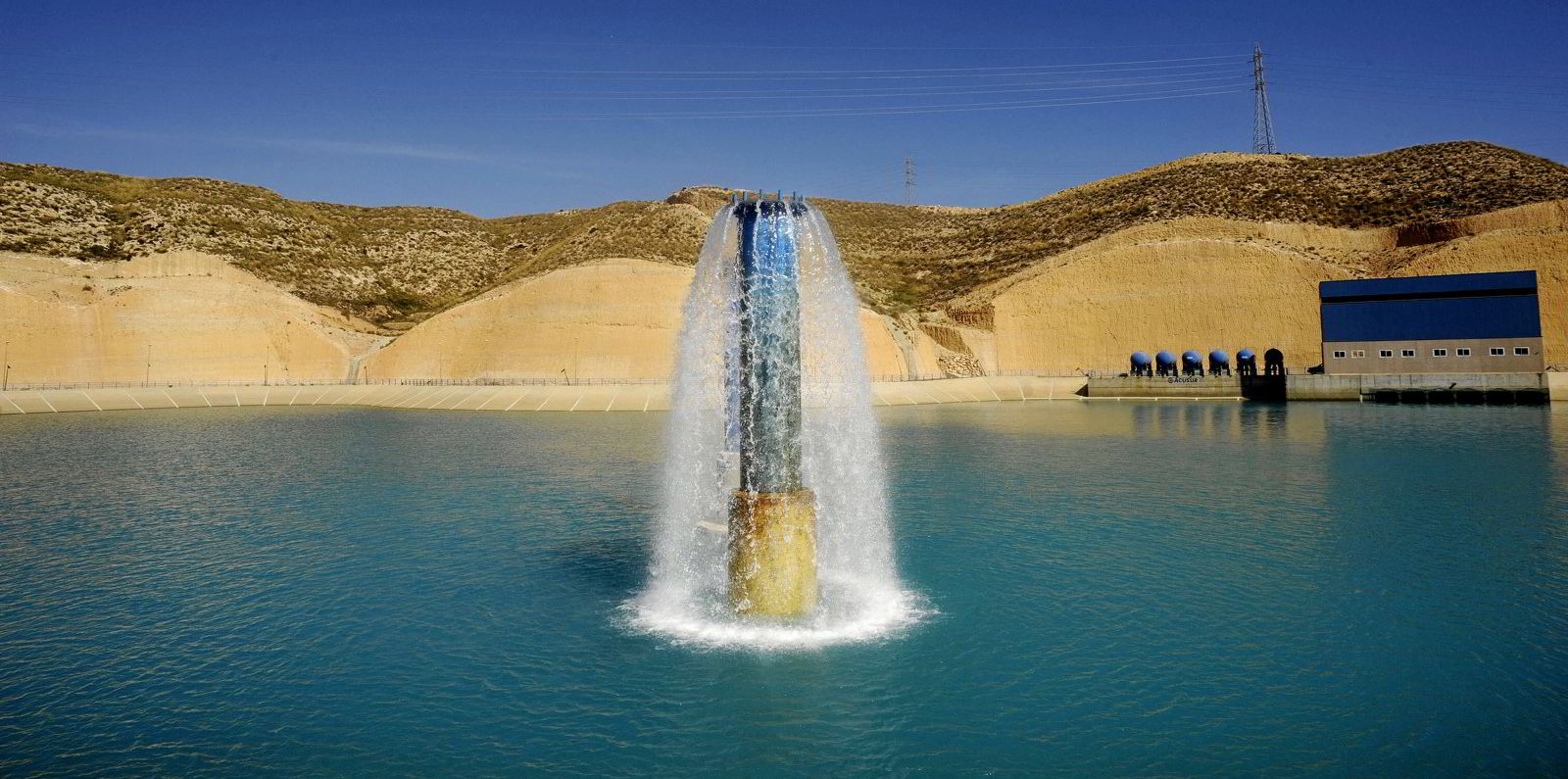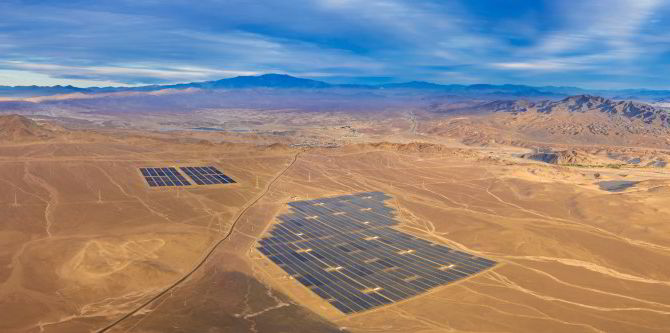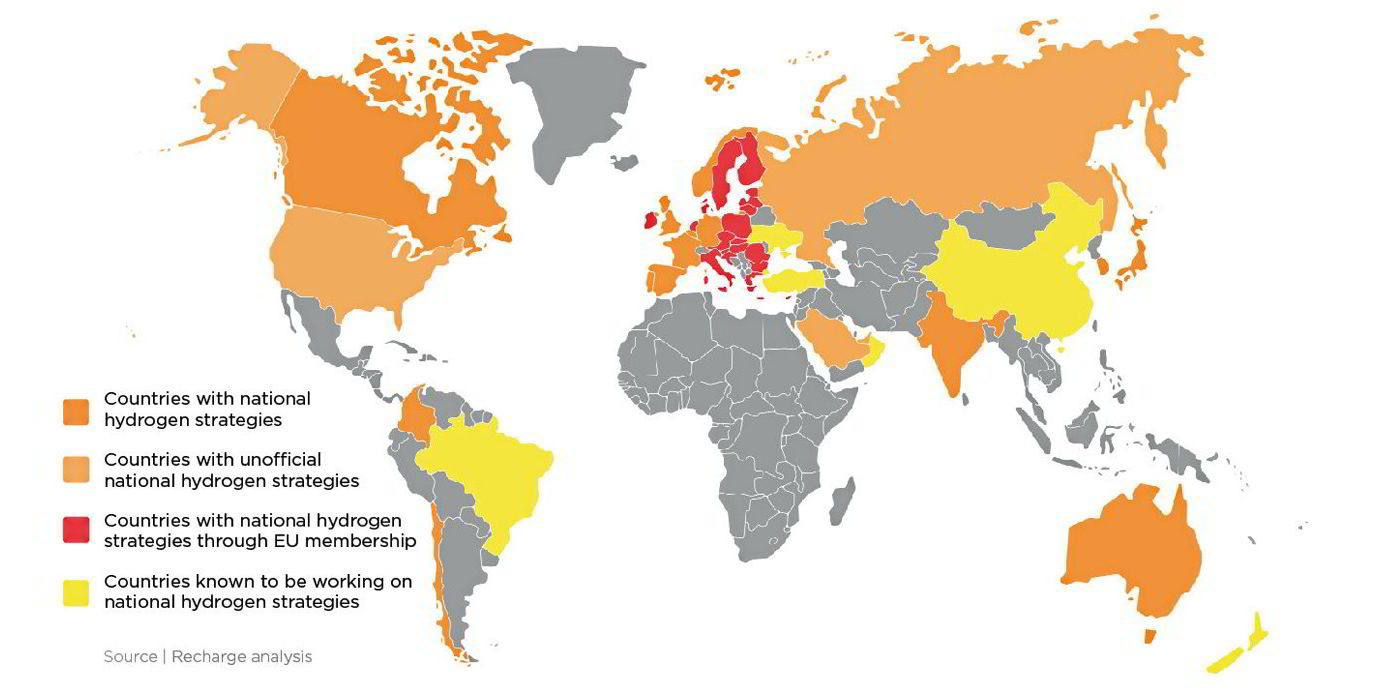'MAYBE' TECH
'Vast majority' of green hydrogen projects may require water desalination, potentially driving up costs
Fresh water is pumped into a reservoir after being treated at a desalination plant in southern Spain.Photo: AFP/Getty
Most of the 200GW-plus global pipeline is due to be built in arid water-stressed regions, says analyst Rystad Energy
Nearly 85% of the green hydrogen capacity in the global pipeline may need to source its water from desalination, adding substantially to the cost of the H2 produced, according to Rystad Energy.
The Norwegian analyst says that the 206GW of announced green hydrogen projects due to be built by 2040 would require a total of 620 million cubic metres (m3) of purified H2O per year, but that almost 85% of this capacity is due to be built in water-stressed regions such as Spain, Chile and Australia.

World’s first national green H2 tender attracts bids from power, gases, steel and LNG sectorsRead more

Hydrogen now firmly at the heart of the global race to net zero — for better or worseRead more
Desalination of sea water or brackish groundwater may therefore be needed — a power-hungry process that would require additional renewable energy to ensure that the hydrogen is green, pushing up costs.
According to analyst Advisian, desalination costs $0.70-3.20 per m3 of purified water, depending on the size and location of the plant.
The production of green hydrogen uses renewable electricity to split water molecules into hydrogen and oxygen, with roughly 9m3 (9,000 litres) of purified H2O required for each tonne of H2. Desalination requires about 1kWh of electricity per m3 of purified water.
The price of renewable energy is the largest component of the cost of green hydrogen, so it is little wonder that many developers are seeking to build projects in sunny, arid, water-stressed regions where solar power would be cheap to produce.
“Our analysis finds that 14 green electrolyser projects are planned in countries with extremely high water-stress levels, 53 projects are in countries with high water stress, and 162 projects are located in regions with medium to high water stress,” said Rystad. “Hydrogen electrolyser projects in the high to extremely high water-stressed countries will almost certainly require desalination for their water supply — potentially implying a demand of 125.7 million cubic meters of water annually for desalination by 2040.
“Demand for desalination could grow fivefold to 526 million cubic meters by 2040 if all the hydrogen projects within regions with water stress levels above medium are realised.”
The analyst explains that the UN expects global freshwater demand to increase by 60% by 2025 — for agriculture alone.
“Therefore, regions with water stress levels above medium will most likely need to develop this additional desalination capacity to support green hydrogen facilities.”
Currently, only 1% of desalination projects around the world are powered by renewable energy, Rystad adds.(Copyright)
No comments:
Post a Comment